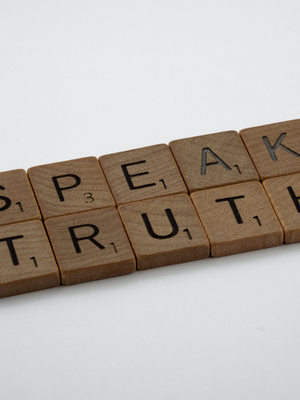 There is no lack of entrepreneurial spirit among women. Women began 49% of new businesses in the U.S. in 2021 (up from 28% in 2019). Women entrepreneurs grew by 48% year-over-year, outpacing men in the entrepreneurial space by 22%. But how are women tracking in intrapreneurship?
There is no lack of entrepreneurial spirit among women. Women began 49% of new businesses in the U.S. in 2021 (up from 28% in 2019). Women entrepreneurs grew by 48% year-over-year, outpacing men in the entrepreneurial space by 22%. But how are women tracking in intrapreneurship?
According to Wikipedia, intrapreneurship “is the act of behaving like an entrepreneur while working within a large organization. Intrapreneurship is known as the practice of a corporate management style that integrates risk-taking and innovation approaches, as well as the reward and motivational techniques, that are more traditionally thought of as being the province of entrepreneurship.”
Psychology Today says that “teaching employees to become mindful intrapreneurs is the way to future-proof an organization.”
Intrapreneurial Assignments
According to Investopedia, intrapreneurship happens when an employee is “tasked” with the initiative of developing an innovative idea or project inside an organization – and given the freedom and autonomy to explore it. Although unlike entrepreneurs, an intrapreneur has access to the resources of an established company and doesn’t face the same level of outsized risks or outsized rewards. And yet, the intrapreneur does put skin in the game.
In one way or another, the intrapreneur is leading the charge on developing something that hasn’t been done in the organization before – whether a new section, a new department, a new product – or perhaps even a new approach or new team. Intrapreneurship has an internal start-up feel. Also, the Post-It Note, Gmail and Facebook like button are all arguably products of intrapreneurial thinking.
Just as formal sponsorship would change visibility and increase equitability in opportunity for women in the leadership pipeline, Forbes has argued that intrapreneurship is one way to fast track women to high-profile and high-potential initiatives, build leadership profiles and ultimately boost female executive numbers.
But also, in the same way that entrepreneurial spirit implies an intrinsic fire, an intrapreneurial spirit does not wait around to be assigned a task. Nor should you wait for permission, if you resonate with an intrapreneurial mindset.
An Intrapreneurial Mindset
Senior leaders have told us about the value of holding an intrapreneurial attitude – which we’ve counted among top tips for elevating your leadership mindset.
Linda Descano, Executive Vice President at Red Havas, told us: “So as I think of being an ‘intrapreneurial executive,’ I bring that same sense of acting like an owner to the organization I work for. I’m going to be constantly thinking about ways of improving the business. I act like I own it, as if it’s my investment. It’s working with that same sense of responsibility and drive to make it grow.”
Indhira Arrington, Global CDEIO at Ares Management, asked: “Outside of your day job responsibilities, what are you doing to contribute to the greater good of the organization and to make yourself an impact player? Anybody can get work done. People want to promote impact players.”
With creative passion and risk-tolerance akin to entrepreneurs, intrapreneurs focus on evolving the business from within. They see opportunities that are not obvious to others. They are willing to take risks, expansive in their thinking and often dynamic in their network. They keep an eye towards opportunities. They understand the internal cultural context and external business context.
Intrapreneurs are also ideas-driven and intrinsically motivated to break down barriers and collaborate with others to make new things happen at scalable levels. That often involves going outside of departmental silos and means impacting your surroundings in a way that goes above and beyond your job description. It requires stakeholder management and ability to manage upwards, as well as project management.
It also means being organizationally savvy and knowing how to sell and pre-sell your ideas. It requires a high level of accountability, resilience and willingness to see failure as a valuable part of the journey.
As written by Tendayi Wiki in Forbes, intrapreneurs need to have a particular mindset because they are operating within larger organizations. They need to focus on creating tangible value for the organization or clients, not just on the ‘theater of innovation.’ They focus on building relationships to garner support and enthusiasm and focus on getting others behind the clear value proposition of their ideas. They also have an ‘ecosystem mindset’ that focuses on identifying repeatable processes that will apply for future projects and build environments for ideas to emerge.
The Organizational Context of Intrapreneurship
According to Samantha Paxson, CMO of CO-OP Financial Services, “What makes intrapreneurs so successful is their empathy toward colleagues’ challenges and their ability to apply critical creativity to generate new ideas.”
Paxson argues that intrapreneurship draws upon innately feminine leadership qualities of being receptive to how to better serve colleagues, clients or customers from a leadership stance. She points out that research has indicated that women score higher than men in 3/4 of the important leadership competencies that support intrapreneurshi – including taking initiative, motivating and developing others, championing change, collaboration and teamwork, problem-solving and driving results.
Though according to Women Unlimited, Inc, intrapreneurship requires two sides – both the intrapreneurial mindset and an environment that is ready to support it (and from that individual).
Organizational characteristics conducive to supporting intrapreneurism include:
- Regularly soliciting new ideas and input from employees at all levels
- Ideas incentive funds
- Fostering inter-departmental collaboration
- Monitoring customer opinions relevant to products and services
- Creating an environment where employees are free to speak up
- Setting aside an in-house venture capital fund
- Rewarding innovative ideas monetarily
- Holding training and immersions to encourage and spark employee creativity
- Encourage fun, creativity and innovation in the environment
How many women of color have left the corporate workplace for entrepreneurialism because they did not find an environment which was prepared to fully include their intrapreneurial mindset? An important part of encouraging an intrapreneurial mindset is that individuals are validated and rewarded for what they bring forward.
And sometimes, as Claudia Vazquez, Founder of elevink told us, it requires refusing to let go of the vision, and waiting for new opportunities and new angles, or even new contexts, to drive ahead.
Cultivating Creativity For an Intrapreneurial Mindset
While there are many components to an intrapreneurial mindset, and not everyone wants to take up that role, it’s possible to build up the qualities that support it.
Some playful advice for improving the muscle of your creative intelligence to support your ability to cultivate an intrapreneurial mindset includes:
- Physical agility: Move your body and make changes in your physical environment when you feel creatively stuck.
- Emotional agility: Become self-aware of your emotions, as the ability to name and regulate your emotions is tied to creative performance.
- Mental agility: Embrace the symbiotic relationship in creativity between generating ideas and being able to apply creative thinking to those ideas.
- Curiosity: A passionate level of curiosity is often required to catalyze the desire to create, so follow the thread of curiosity and nurture it.
- Self-belief: Valuing your unique perspective and contribution is important to allowing self-belief to build momentum behind your ideas.
- Intuition: Trusting and validating your intuition and gut instinct – when you know without knowing how you know – is critical in seeing new possibilities.
- Daydreaming: The productive activity of letting your mind wander is correlated with higher intellect and creative ability.
If you hold an intrapreneurial mindset, embrace it as a leadership asset and find a culture in which you can thrive for your ability to cast your vision above and beyond the day job.
By Aimee Hansen









